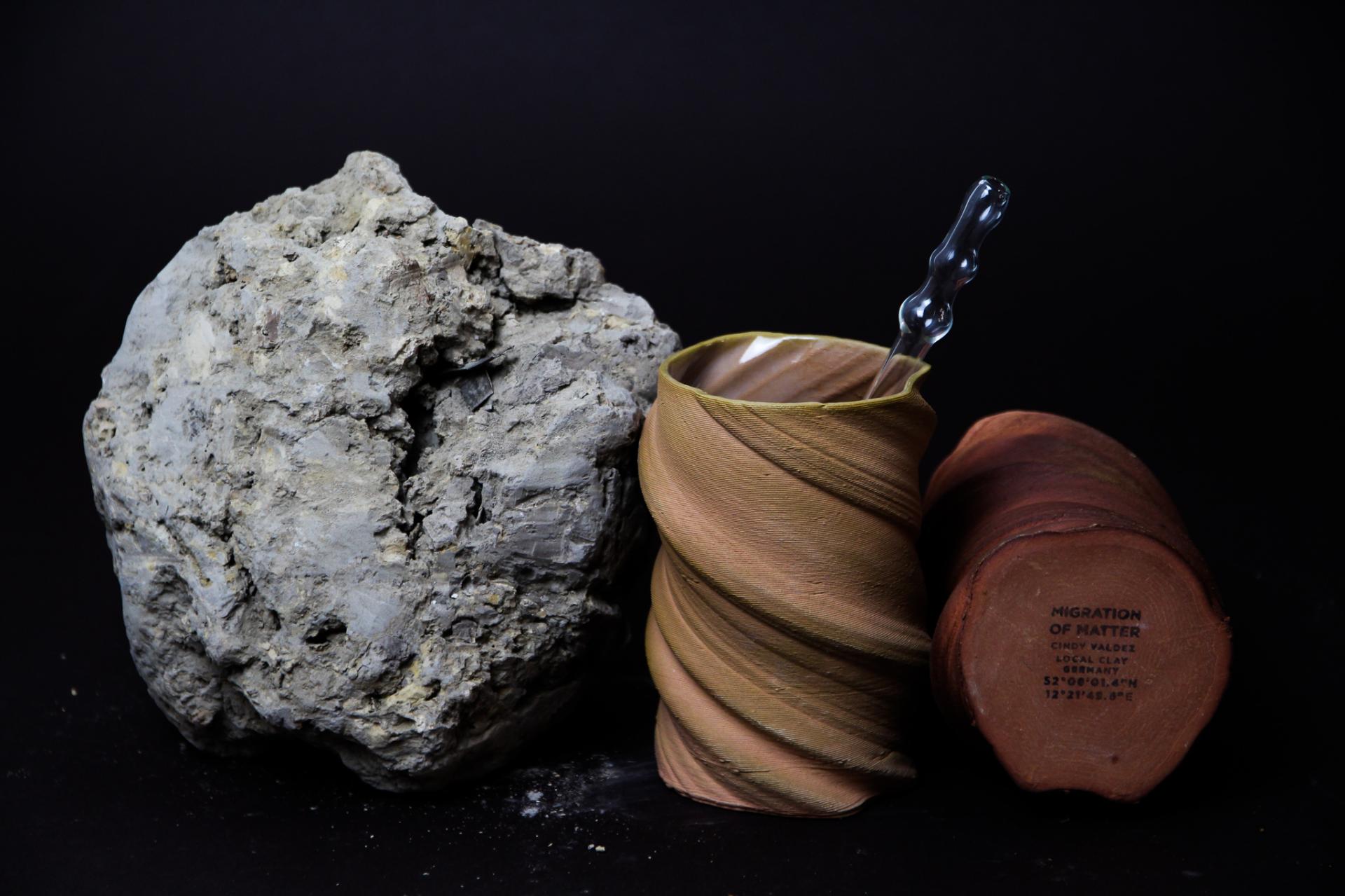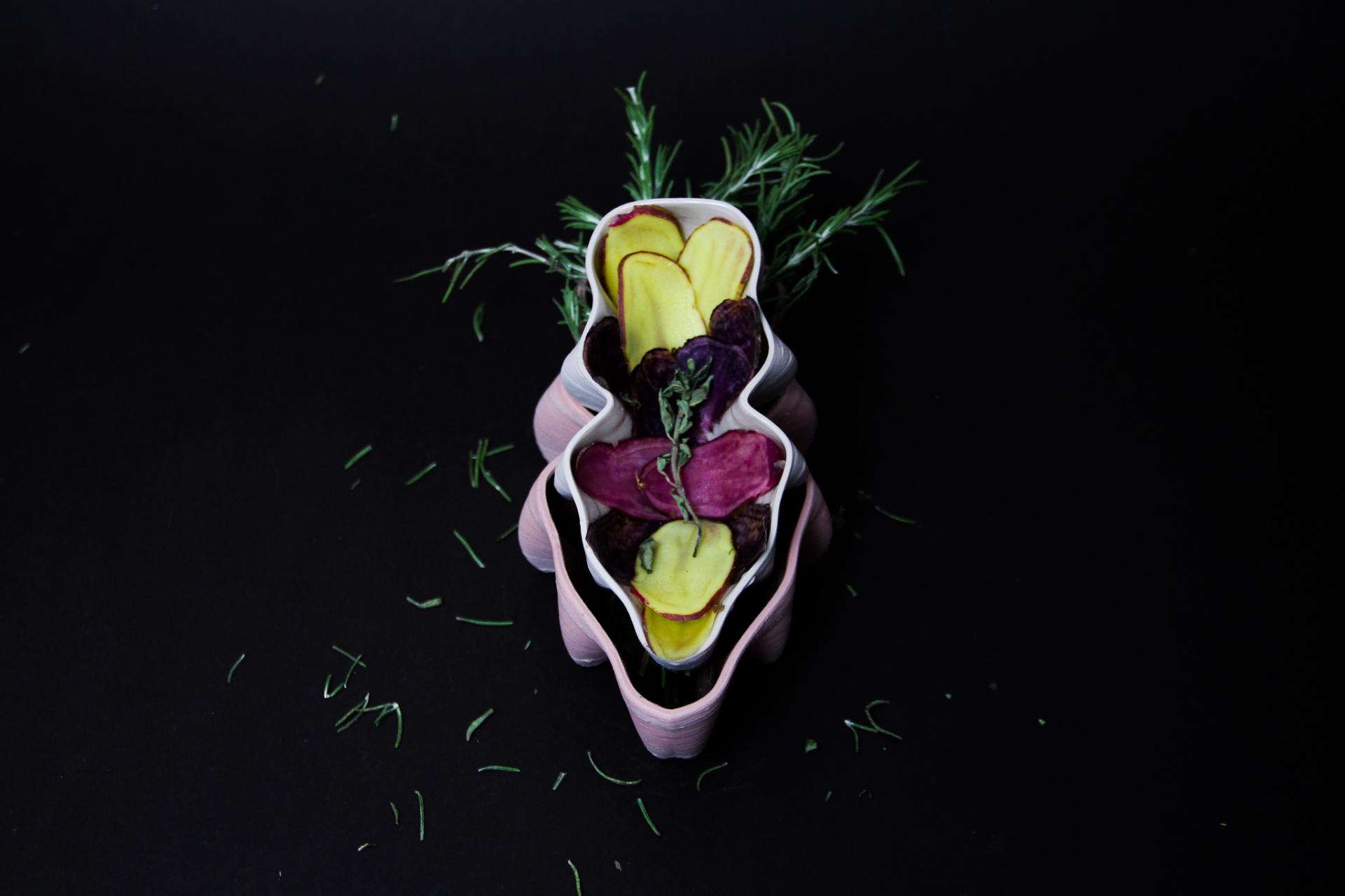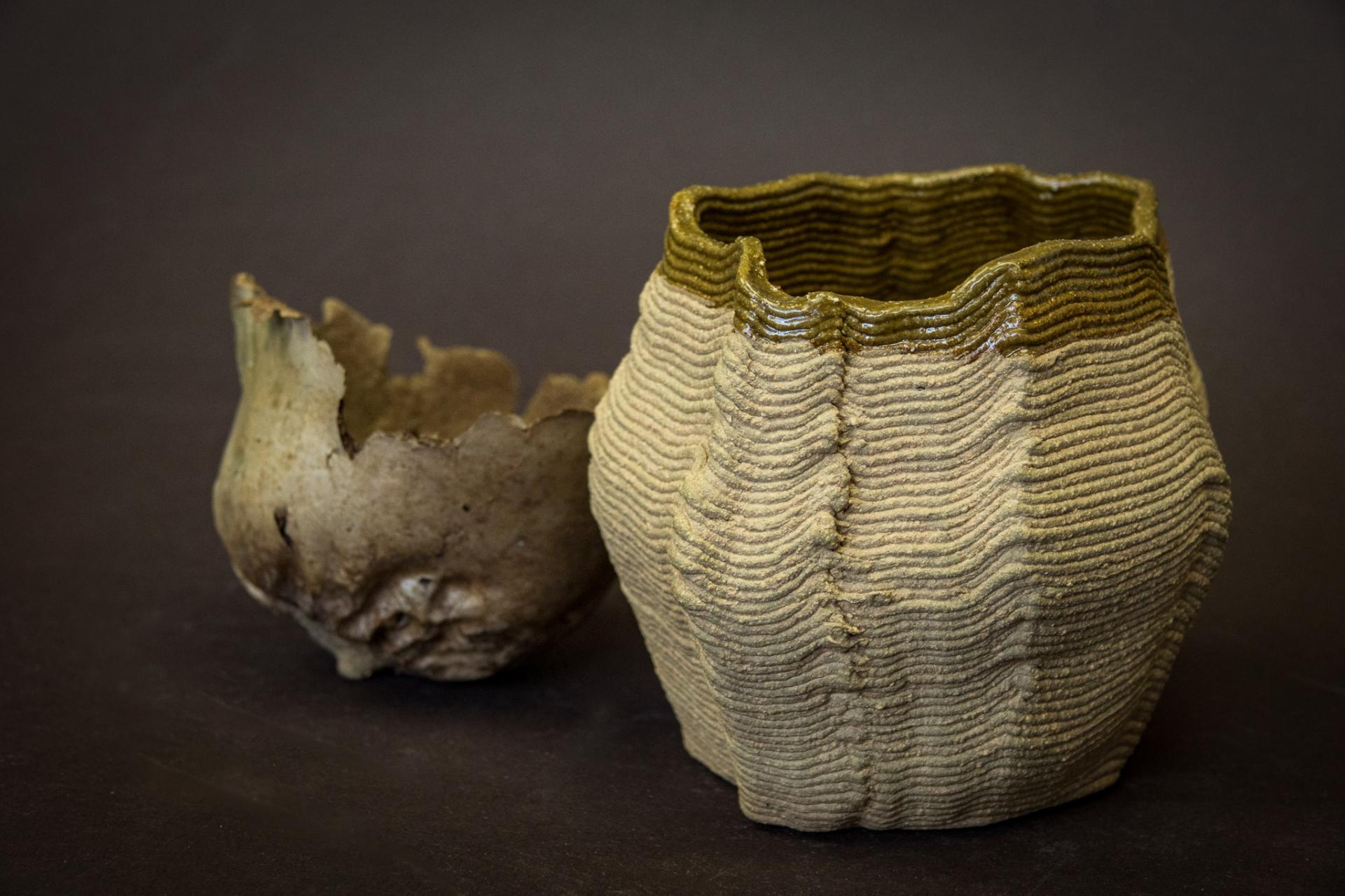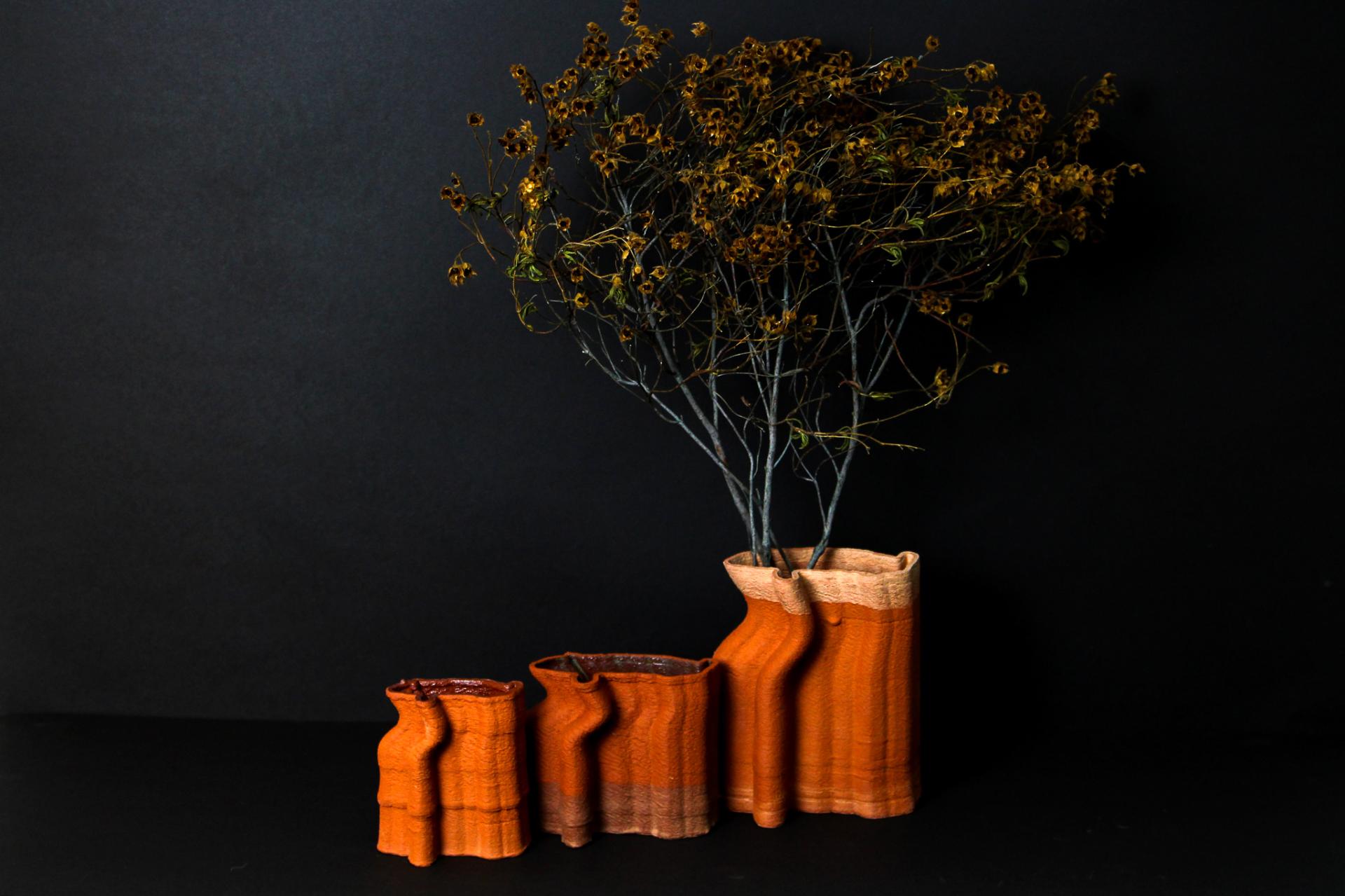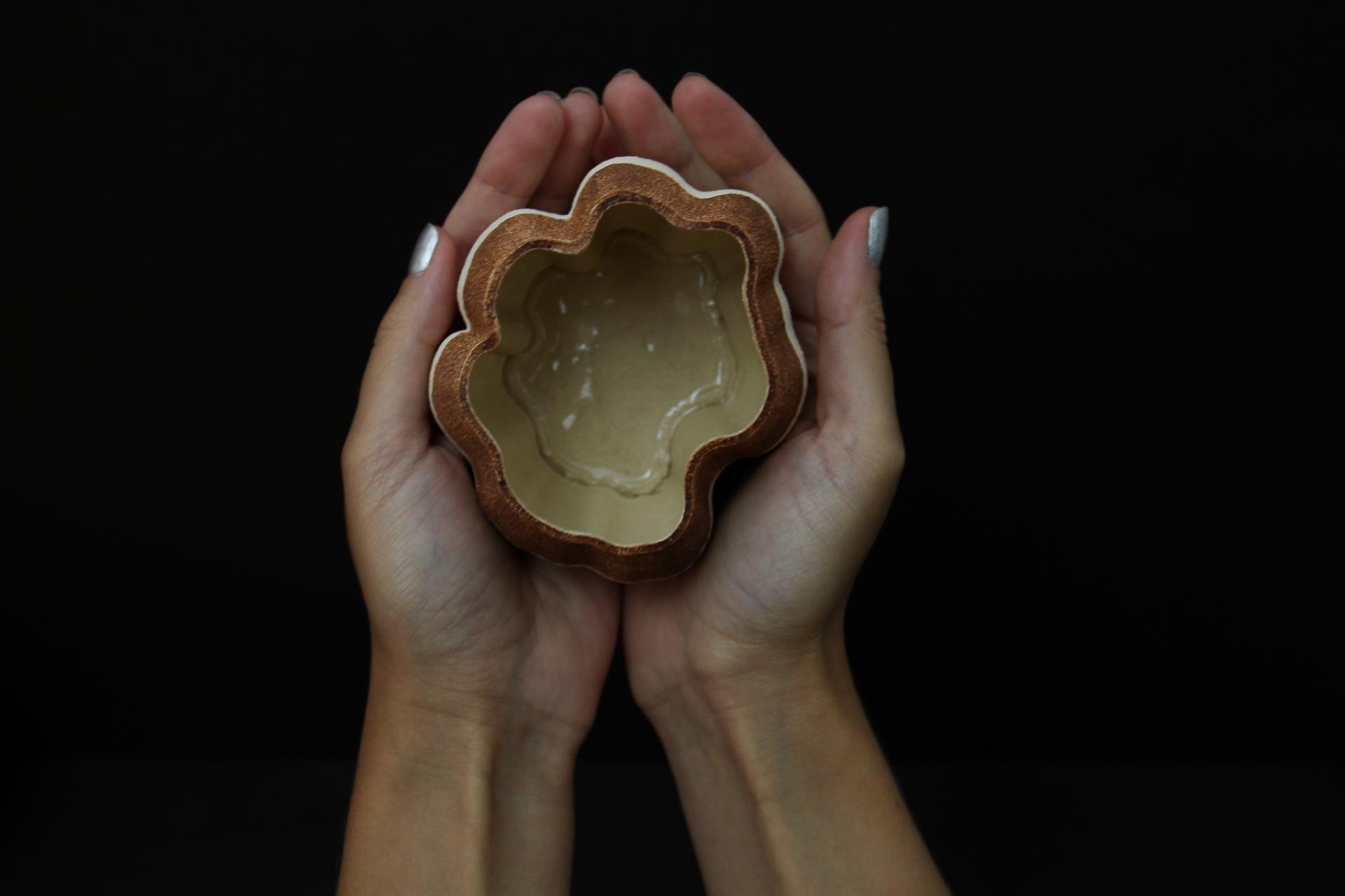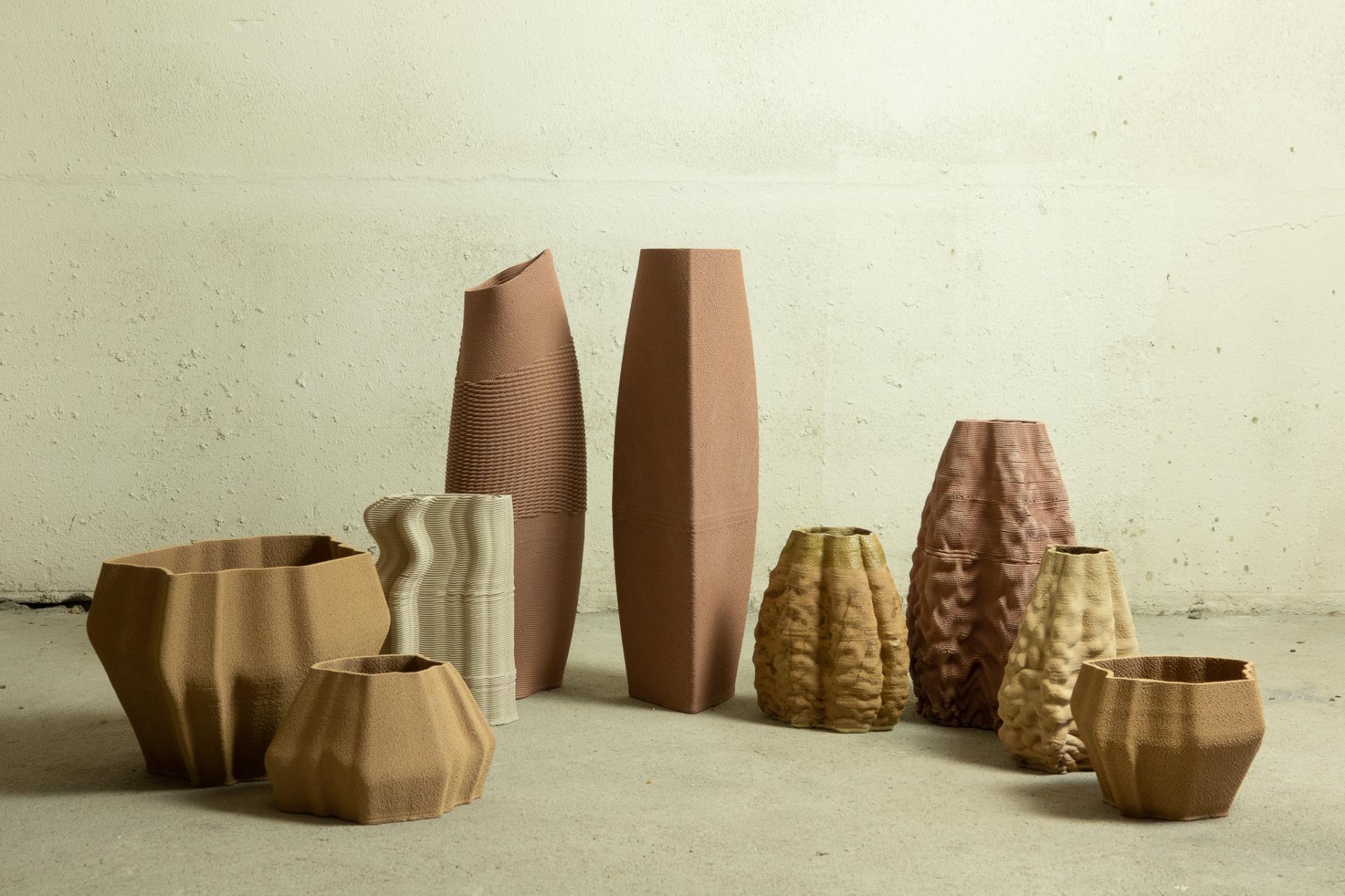Migration of Matter
Basic information
Project Title
Full project title
Category
Project Description
Today, the Earth's biodiversity is being lost at an alarming rate. By embodying elements of lesser known plant species, our project can highlight this issue and increase knowledge of the natural world. Each 3D printed clay artefact tells a unique story. Aesthetically, we take inspiration from little known, weird and wonderful plants and fungi by 3D scanning them and giving new life through parametric design using local clays and pigments from the same regions as the objects we re-imagine.
Geographical Scope
Project Region
Urban or rural issues
Physical or other transformations
EU Programme or fund
Which funds
Description of the project
Summary
Today, the Earth's biodiversity is being lost at an alarming rate. Our project has the power to highlight this issue and increase knowledge of the natural world. Issues such as biodiversity of flora, food and locally available materials are the key motivation behind the products we create. Each piece tells a unique story. Aesthetically, we take inspiration from little known, weird and wonderful plants and fungi by 3D scanning them and giving new life to their diverse forms through parametric, generative design and 3D printing. Physically, we try to incorporate local clays and pigments from the same regions as the objects we’re reimagining. This results in beautiful, unique artifacts that are able to capture and use the diversity of the natural environment to create new aesthetics that present nature to us in thought-provoking ways. In this process, nature becomes a central element of design. We have created 3D printed ceramics inspired by the shapes and colors of biodiversity in the natural environment. We have also developed new tools and processes to reduce production costs and increase our production volume. These tools include our custom designed ceramic printer, capable of printing very hard clay and providing a unique and accurate print quality to better depict nature. The printer is our primary tool and enables us to keep up with more traditional ceramic production methods while being more sustainable. It’s an extension of craftsmanship in ceramics, developing the practice further and taking it to the next level. Ceramics is a timeless craft, we are exploring its limits and possibilities through technology.
Key objectives for sustainability
- Use local resources wherever possible: The use of local soil as a base material creates a connection to its various origins. The variety of its provenance is reflected in the variety of the ceramics, colors and shapes. All the material used for 3d printing is local clay. We also use naturally occurring pigments from the clays and organic waste ; like potato peels from the local community in Berlin.
- Recycle raw materials and end of life products. , We re-use clay as much as possible, in the case of printing mistakes, we can always reuse the material and print again. It is also possible to reuse old or broken pieces as ground up chamotte material to be mixed with new clay in order to create a stronger type of clay ready to print again, completing the circle.
- Reduce consumption of raw materials: Through the extrusion method the consumption of material for the 3d printed pieces is less than 50% of traditional pottery production.
- Advocate for the value of craft clay products: This project demonstrates that it is possible to transform such a pure and natural material as clay into complex, new and sophisticated design objects, without the need for them to be 3D printed in plastic. This project brings together the raw material of the earth, with its forms of biodiversity, embodying significant value in the final object. Clay products are better for the environment in many ways. They are born of the earth and can last for generations. If they do ever get discarded, they safely return to the earth.
- Advocate for the retention of biodiversity: Our goal is to communicate biodiversity through our 3d printed product line. In this way, we want to bring users closer to different species and discover new ones. In order to educate people about local species that can and should be consumed, to support local farmers and the environment. This ensures these species, and interest in cultivating them, will not be lost t
Key objectives for aesthetics and quality
- Form Through Nature & Parametric Design: The complex shapes found in biodiversity are our inspiration. Through parametric design, the typical forms of local plants and foods are reflected in the unique aesthetic of the final product. Using digital tools it is possible to capture these forms as accurately as possible and create new aesthetics, where form and meaning can be communicated in a different and creative way. In the process we are creating both a digital archive of the nature that inspired the form.
- New aesthetics: Organic shapes in biodiversity are the central element of design. They present opportunities for unusual but surprisingly utilitarian aesthetics. The objects capture a unique character in both texture and form, providing a very tactile, visceral experience. The shapes are intentionally odd, to force the user to consciously think about how to interact with the object and what part of nature made them that way. This first collection is inspired by local biodiversity from South America and Europe, made with local clay from Peru, Germany and Spain.
- High Tech:We have been working since spring 2021 in order to improve the print quality, production and costs of a small series of ceramics. We are merging our skills in 3D printing, clay processing, parametric design, electronics and model making to develop the technology of our self-built ceramic 3D printing system. There are currently no commercially available solutions for ceramic 3D printing that suit our requirements for quality, size and production speed. As such, we have spent the last 9 months with Design Farm Berlin developing a completely custom machine that can print much faster and with more massive clay. One of our key innovations and technical challenges is a triple extruder system that can cut down per part production time to ⅓ of a standard single print by printing 3 parts simultaneously on the same machine. For production using a 3D printer with h
Key objectives for inclusion
- Co-design: Migration of Matter is a project based on co-creating with the different forms of biodiversity, especially local fruits and vegetables less known by urban societies. The mix between the organic forms of the fruits of nature with digital media, make possible the co-creation of new tactile and utilitarian aesthetics. Is a co-design between nature, digital and clay in order to create new perspectives of nature.
- Citizen engagement: Culture / Education / Knowledge to biodiversity: Through the aesthetics of the pieces, it is possible to take people closer to the real shapes of nature and teach them about the forms of biodiversity that they don´t know about. With this we want to raise questions about biodiversity and different species, go beyond the standardized food from supermarkets and wake up the interest for the local farmers who cultivate these species.
- Design affordability: In order to bring all these new shapes, aesthethics and story behind each piece, to everybody in society. We want to make this type of design accessible to all people, so everybody can access the experience of using these shapes of nature. For that we develop a new ceramic 3d printer able to reduce all the heavy process behind ceramic printing and reduce cost and time. This significantly reduces the price of our new design line, making it accessible to more people. We work with shapes of biodiversity and local materials, like clay. We are able to interpret these shapes through tech and design to put this in urban contexts, where society could be able to reconnect with shapes of nature in their daily life.
Results in relation to category
The result of working with shapes of biodiversity in conjunction with digital tools is a new aesthetic with strong content to communicate. At the same time they have different utilities, for example in our dinnerware line, where people have to interact with the shapes of nature in order to enjoy the gastronomy experience. 3D printing enables us to produce pieces with more complex designs and sustainable materials. In our case, we are inspired by shapes of nature, opening new possibilities of creation and bringing a different perspective to people to reconnect with nature and their shapes.
These new forms, which people can try out in different ways, connect them to these new aesthetics. The user is exploring objects, understanding them, and that is where the user starts to ask questions about their aesthetics. Where do these forms come from? Why do they look like this? What are they?
It is at this point that questions are raised about biodiversity and its varieties, which is exactly the reaction we want to provoke, to make them aware that these varieties exist all around us.
How Citizens benefit
One of our motivations during the research phase of the project was to learn that Germany has approximately 125 potato varieties, of which only 3 or 4, the standard varieties, are found in supermarkets. The question we asked ourselves was what happens to the other 120 potato varieties, where do they go? In many regions of Germany there are still local farmers who continue to grow these different varieties, but unfortunately they are not known to exist in urban societies. So the farmers are competing with the standard varieties in the supermarkets and have fewer buyers.
As long as society is unaware of the existence of these varieties, local farmers will have fewer buyers and if this continues, farmers will lose interest in continuing to grow these varieties and our biodiversity will be lost faster. One of the marketing studies points out that part of the German population is afraid to buy food of unknown appearance or color. Many of these German varieties look different from the standard and this is one of the reasons they are not sold in supermarkets. It is important to educate society about these varieties. One of our options is to do it through design, through our pieces and their new aesthetics. Then people can know about their existence, shape and color and will be more interested to look for them at local farmers' markets and demand in supermarkets for more varieties will increase.
Physical or other transformations
Innovative character
- New aesthetics: Most utilitarian objects are based on geometric shapes that fit our bodies in order to make the public feel comfortable with their daily use. There are hardly any everyday objects with asymmetrical morphologies, inspired by the shapes of nature, where humans can learn to understand and use these shapes in their daily lives, which come from their own locality.
- New 3D Printer: In order to develop this project and achieve high quality pieces, more accessible to society, we have created a customized 3D ceramic printer that suits our requirements for quality, size and production speed. As such, we have spent the last 9 months developing a completely custom machine that can print much faster and with more massive clay.
One of our key innovations and technical challenges is a triple extruder system that can cut down per part production time to ⅓ of a standard single print by printing 3 parts simultaneously on the same machine. For production using a 3D printer with high pressure extrusion & triple extruder system, we assume a reduction in time of 80 to 90 % per printed part compared to a conventional 3D printer.
Clay is normally printed in a very fluid and unstable state. By creating a high power paste extrusion machine we are able to significantly reduce material processing time, increase print speed and create larger, more stable objects, with a complex new äesthetic, design and functionality. This new printed ceramic has a faster drying time for firing.
Learning transferred to other parties
There are many people around the world 3D printing ceramics at low volumes and there is clearly a market for the products they create. The ceramics industry as a whole has a production value of €27.8 billion in the EU economy. The market for specifically 3D printed ceramics is harder to quantify but if we could at least capture a small percentage of the hand crafted ceramic industry.
There are very few examples of people outside of research environments using heavy duty paste extrusion systems to increase their production capabilities. We see this as an opportunity to collaborate with the ceramic industry with a considerably better system and a completely different design aesthetic.

